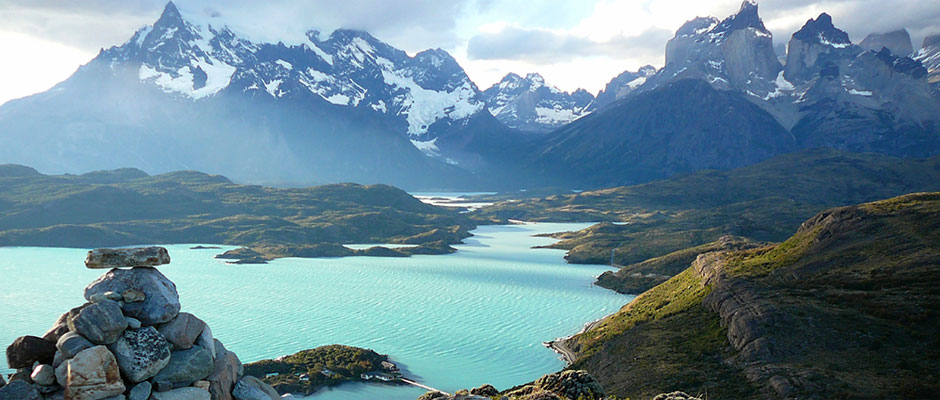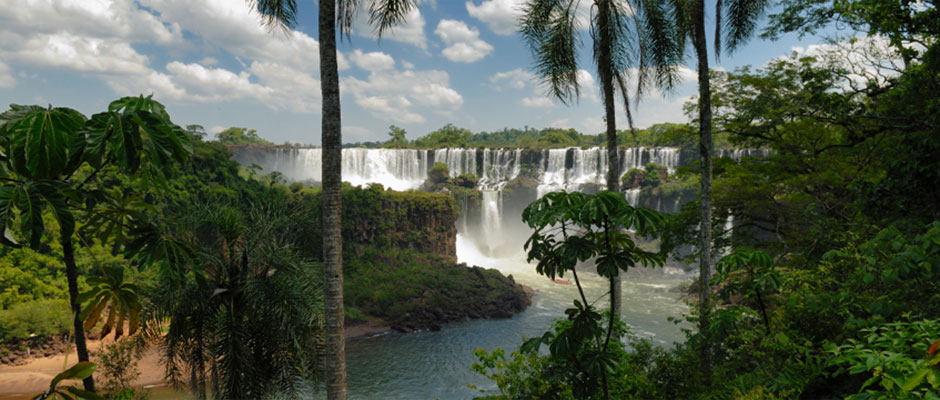Argentina’s natural riches
Argentina forms the eastern half of South America’s southern cone. It has about 40 million inhabitants and can be divided into four major parts: the Andes to the west (with arid basins, grape-filled foothills, glacial mountains and the Lake District), the fertile lowland north (with subtropical rainforests), the central Pampas (a flat mix of humid and dry expanses) and Patagonia (a combination of pastoral steppes and glacial regions).
More than twenty national parks preserve large areas of these varied environments and protect wildlife (much of it unique) such as the caiman (or yacaré), puma, guanaco (a lowland relative of the upper-Andean llama), rhea (similar to an ostrich), Andean condor, flamingo, various marine mammals and seabirds such as Magellanic penguins.
The climate
Argentina’s climate ranges from subtropical in the north to humid and steamy in the centre, and cold in the temperate south. The country’s great variety and elongated geography can make a visit in any season worthwhile.
Buenos Aires’ urban attractions, for example, transcend the seasons, but southern Patagonian destinations, such as the Moreno Glacier in Santa Cruz, are best to visit in the summer months (December to February).
The Iguazú Falls in subtropical Misiones province are best in the southern hemisphere’s winter or spring when heat and humidity are less oppressive.
Bariloche is an all-year destination. During the winter months (mid-June to late September) you can go skiing, during the summer months hiking. Spring and fall are the most colorful and nature will surprise you behind evert bend of the road!
The culture
Argentina’s culture has been greatly affected by its immigrant population, mostly European. Their influence contributed to the demise of pre-Columbian cultures, resulting in the lack of a dominant indigenous population.
Buenos Aires is a big melting pot of all of these cultures and has been receiving immigration from other Latin American countries, mainly from Peru, Bolivia and Paraguay.
Transport
Long-distance buses are fast and comfortable; some even provide on-board meal services. Most fares are relatively cheap by international standards, but prices fluctuate.
Private operators have assumed control of the formerly state-owned railways, but have shown little interest in providing passenger service except on the very efficient commuter lines in and around Buenos Aires. One surviving train line connects Buenos Aires and Bahía Blanca on the coast. One rather slow train line now connects Buenos Aires with the province of Formosa in the north. Another new line connects the Atlantic coast with Bariloche.
Bariloche has an international airport. Most flights go through Buenos Aires, however. In some cases you may have to change airports in Buenos Aires.
There are currently two major airlines operating in Argentina, Aerolineas Argentinas and LAN. Prices vary by season and in some cases are higher for foreigners. The average domestic round-trip will cost you anywhere between US$200 and US$400. Flying from the extreme north to the south takes 5 hours











